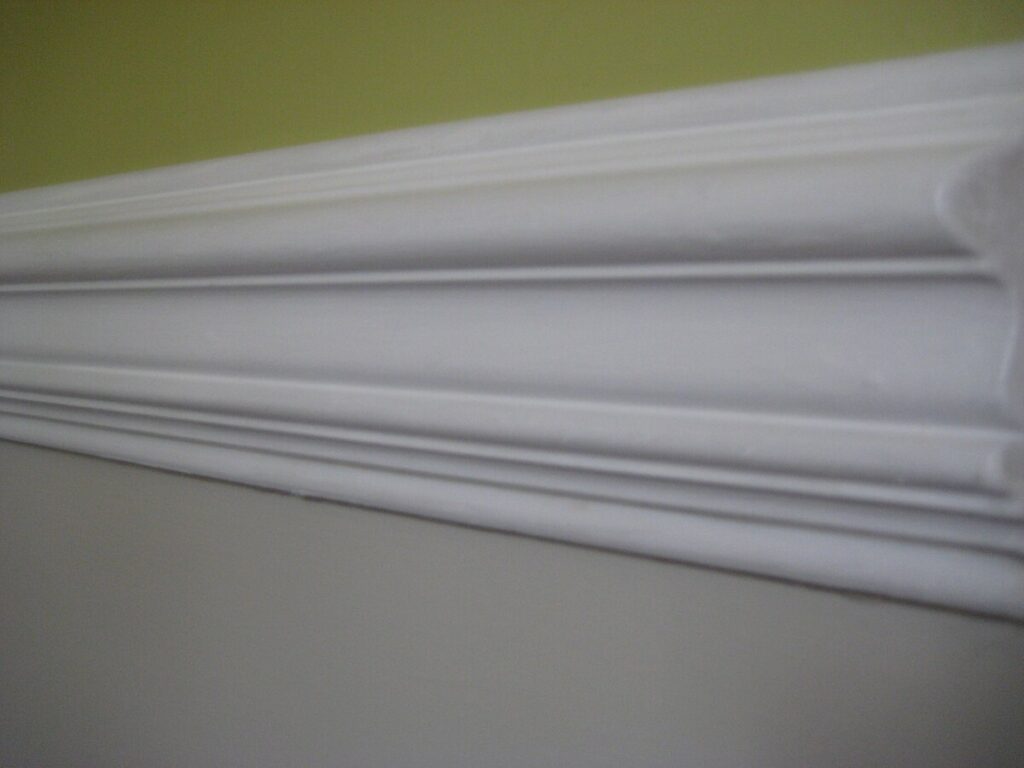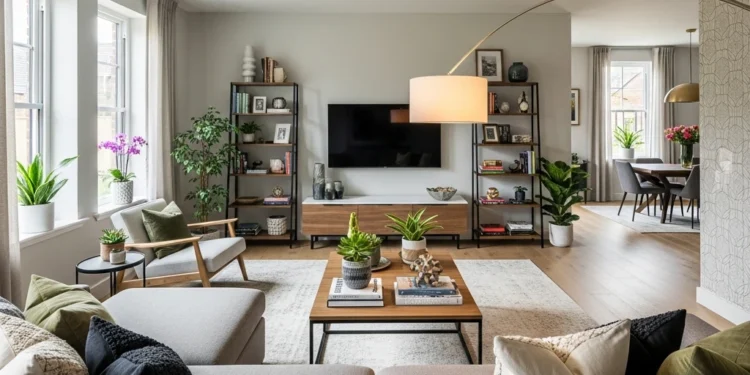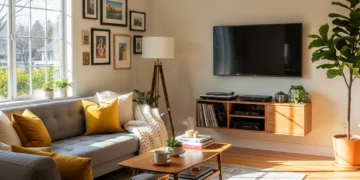Chair rails have been around for centuries, originally serving as a way to protect walls from damage caused by moving chairs. But over time, they’ve evolved into a stylish design element that adds depth, character, and architectural interest to a space.
Beyond their practical purpose, chair rail molding creates a visual break in a room, allowing for creative wall treatments and color combinations. Whether you’re looking for a classic, elegant feel or a modern, bold statement, chair rails offer a simple yet impactful way to enhance any interior.
What is a Chair Rail?
A chair rail is a horizontal molding placed along a wall to prevent chairs from scuffing or damaging the surface. Traditionally installed at about 30 inches from the floor, it aligns with the height of most chair backs.
But chair rails aren’t just for protection. They also define spaces, making them ideal for separating different wall treatments. This makes it easier to pair wallpaper with paint, or wainscoting with bold colors, giving your walls a structured and polished look.
Variety in Chair Rail Design
Chair rails come in a wide range of styles, from simple and minimalistic to ornate and decorative. A basic design might be a single strip of molding, while more intricate profiles include layered or carved patterns.
For period-style homes, built-up chair rails consisting of stacked moldings can create a dramatic effect. Whether you prefer a subtle touch or a statement-making detail, there’s a chair rail design to match any interior style.

Chair Rail Design Ideas
Chair rails offer endless possibilities for creative interior design. Whether you want to add contrast, texture, or functionality, there are many ways to use this classic feature in fresh, modern ways. Here are some inspiring ideas to elevate your space:
- Two-Tone Walls: One of the most popular uses of a chair rail is to divide a wall into two different colors. This technique adds depth and contrast to a room. For a traditional look, use a darker shade on the bottom and a lighter color on top. For a bold statement, consider an unexpected color combination, like navy blue with crisp white or a deep emerald paired with soft gray.
- Stenciled Designs: If you want the visual effect of a chair rail without the molding, a painted stencil can achieve a similar look. This is a great way to introduce pattern or texture without installing physical trim. You can use geometric patterns, floral designs, or even a faux woodgrain effect to create a unique and artistic feature.
- Reclaimed Wood: For those who love rustic or farmhouse aesthetics, using reclaimed wood as a chair rail is an excellent option. The weathered texture and natural imperfections add warmth and character to any space. Pair it with shiplap, whitewashed walls, or exposed brick for a cozy, lived-in feel.
- Tile Accents: In bathrooms, kitchens, or mudrooms, a chair rail made from decorative tile serves both aesthetic and practical purposes. Tiles are resistant to moisture and easy to clean, making them ideal for high-traffic areas. Choose classic subway tiles for a timeless look or opt for colorful mosaic designs to create a bold statement.
- Built-In Ledges: Take your chair rail to the next level by transforming it into a small ledge or shelf. This is especially useful in dining rooms, hallways, or home offices where you want to display framed photos, artwork, small plants, or decorative items. A slightly wider molding can act as a functional design element without overwhelming the space.
- Wallpaper Below the Chair Rail: Instead of painting the lower half of the wall, consider using wallpaper beneath the chair rail to add texture and personality. Choose from classic damask prints, modern geometric patterns, or even grasscloth wallpaper for a sophisticated touch. This approach adds dimension and contrast without making the room feel too busy.
- Contrasting Materials: Get creative by mixing different materials above and below the chair rail. For example, pair traditional wood molding with a sleek metal or stone accent below, or combine a painted upper wall with textured plaster or wainscoting beneath. This technique creates a high-end, custom-designed feel.
With so many ways to customize chair rails, they remain a versatile design element that can fit any style—from classic and elegant to modern and artistic.
Why Some People Think Chair Rail Molding Is Outdated
While chair rail molding has its fans, some argue that it feels outdated and unnecessary in modern interiors. Here’s why:
- It Can Feel Stuck in the Past – Chair rails were a staple of traditional and colonial-style homes, but in sleek, minimalist spaces, they can seem out of place. Some see them as a relic of older home designs rather than a fresh, modern feature.
- Open-Concept Living Has Changed Interior Design – With the rise of open floor plans, the need for visual separation between upper and lower wall sections has decreased. Many homeowners prefer seamless walls without extra trim breaking up the space.
- It Can Look Cheap if Done Wrong – Poorly placed, low-quality, or mismatched chair rails can detract from a home’s value. If the molding is too thin, too thick, or paired with clashing wall treatments, it can make a room feel disjointed rather than refined.
- Furniture Trends Have Changed – Modern dining sets and furniture are often designed with lower backs or don’t even touch the wall. This reduces the functional need for a chair rail, making it more of a decorative choice than a necessity.
- Other Wall Treatments Have Taken Over – With the rise of full-wall wainscoting, bold accent walls, and textured panels, many designers opt for newer ways to add dimension and character to walls—without relying on chair rails.
That said, chair rails aren’t necessarily outdated; it just depends on how they’re used. Thoughtfully designed chair rails with modern styling can still add elegance and charm to today’s homes. But for those chasing ultra-minimalist aesthetics, they might not be the best fit.
Why Installing a Chair Rail Molding Is Worth It
Adding a chair rail molding isn’t just about protection—it’s an easy way to elevate a room’s visual appeal. Chair rails add depth and structure, breaking up large wall surfaces and allowing for diverse design elements.
Additionally, they provide a sense of refinement and sophistication while still serving their original purpose of shielding walls from scuffs. Whether for aesthetics or practicality, chair rails are a valuable design addition to any home.












